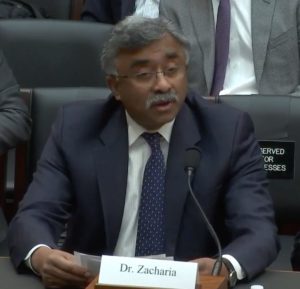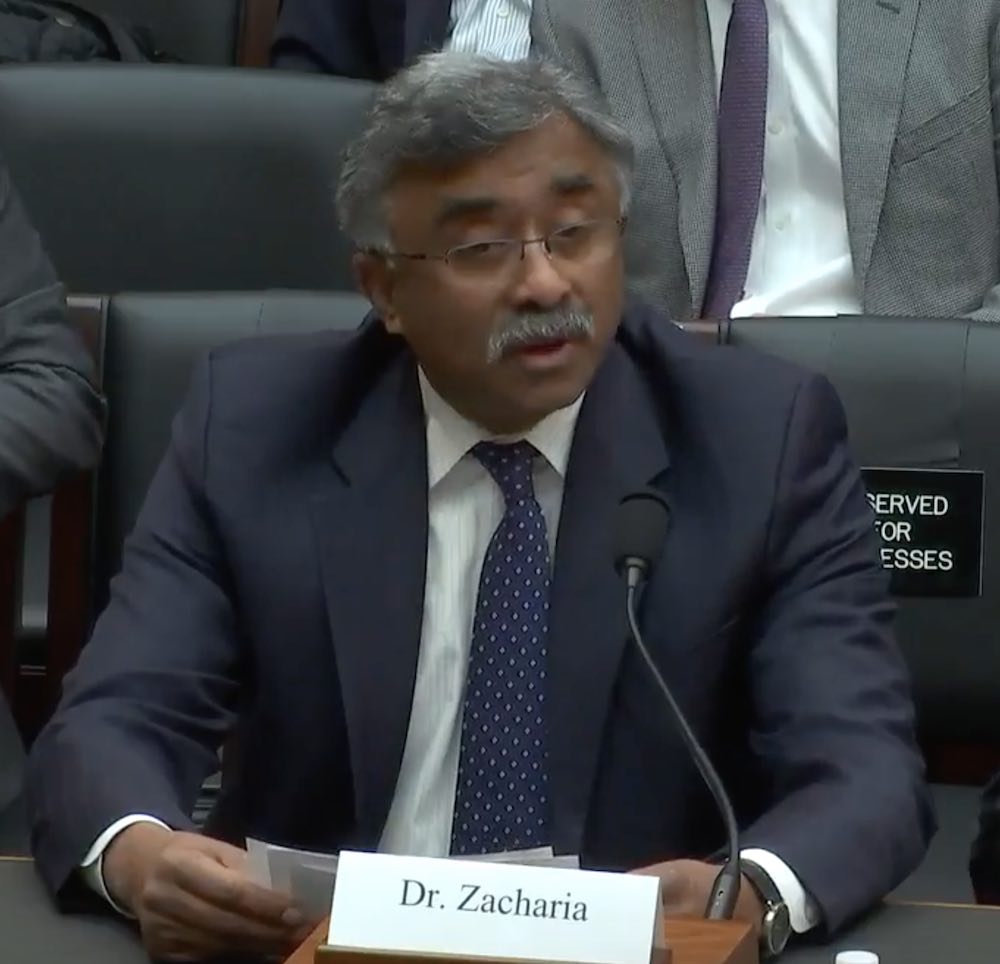
Thomas Zacharia is Director of Oak Ridge National Laboratory.
In this video, Thomas Zacharia from ORNL testifies before the House Energy and Commerce hearing on DOE Modernization. The hearing will examine plans for modernizing and realigning the Department of Energy (DOE) to better execute its various missions. It will provide Members with information to help assess what is necessary to ensure effective execution of the core DOE missions—national security, energy and economic security, environmental cleanup, and the scientific and technological innovation to support those missions.
From the Transcript:
The national laboratories have worked with industry for decades to build powerful supercomputers and apply them to DOE mission needs,” said Thomas Zacharia in his written statement. “These HPC systems have delivered nuclear weapons simulation and modeling capabilities that are vital to the NNSA’s Science-Based Stockpile Stewardship Program. They have been used by scientists to understand the evolution of stars, to simulate the combustion of alternative fuels in high-performance engines, to accelerate drug design and discovery, and to improve our understanding of the hazards and risks of earthquakes. Researchers from industry have exploited them to design advanced aircraft, high-efficiency gas turbines, and better paper products. Finally, the technologies developed to enable these systems are exploited by industry to bring ever more powerful devices to the marketplace. (To quote Lewis Platt, CEO of Hewlett-Packard in the 1990s, “Yesterday’s supercomputer is today’s laptop.”)
In the past few years, other nations—notably China—have invested heavily in the development of HPC systems. As of November 2017, China’s TaihuLight system was more than five times as powerful as the top-ranked U.S. system, the Cray XK7 Titan at ORNL. The DOE national laboratories are actively engaged in reclaiming U.S. leadership in this vital area. At the OLCF, we are deploying a system that may well be the world’s most powerful supercomputer when it begins operating later this year. Summit will be at least five times as powerful as Titan. It will also be an exceptional resource for deep learning, with the potential to address challenging data analytics problems in a number of scientific domains. Summit is among the products of CORAL, the Collaboration of Oak Ridge, Argonne, and Livermore, a partnership that was recognized by HPCWire in 2015 with an Editor’s Choice award for “Best HPC Collaboration between Government and Industry.”
In addition, we are working with the three NNSA laboratories (Livermore, Los Alamos, and Sandia) and with two other SC laboratories (Argonne and Lawrence Berkeley) on the Exascale Computing Project (ECP). Launched by DOE in FY 2017, the ECP is focused on accelerating the delivery of a capable exascale computing ecosystem. China plans to have its first exascale system in operation by 2020. The ECP is integrating the strengths of the six participating laboratories to ensure that researchers in the United States will have access not only to physical computing systems with the requisite power, but also to the tools that they will need to deliver breakthrough modeling and simulation solutions that address the most critical challenges in scientific discovery, energy assurance, economic competitiveness, and national security. The benefits of the ECP will extend beyond DOE to other federal agencies and to U.S. industry.
Sign up for our insideHPC Newsletter




